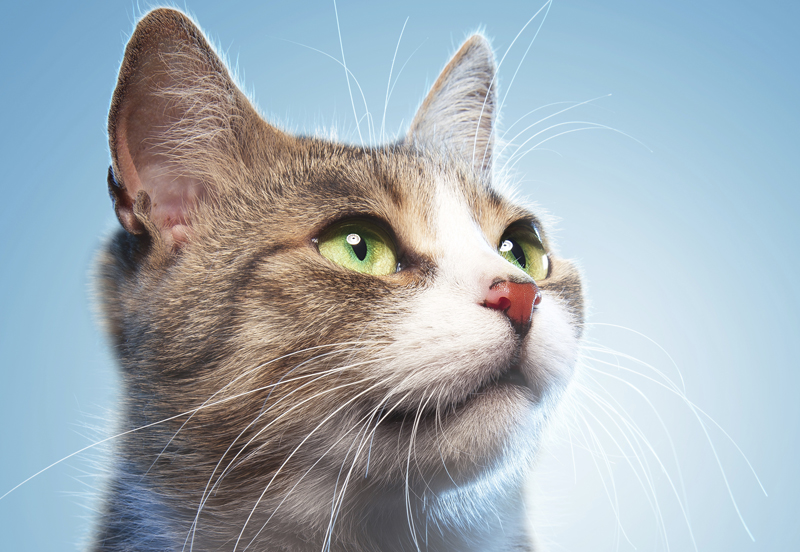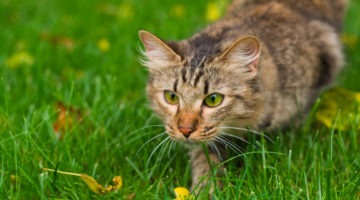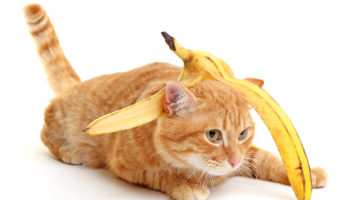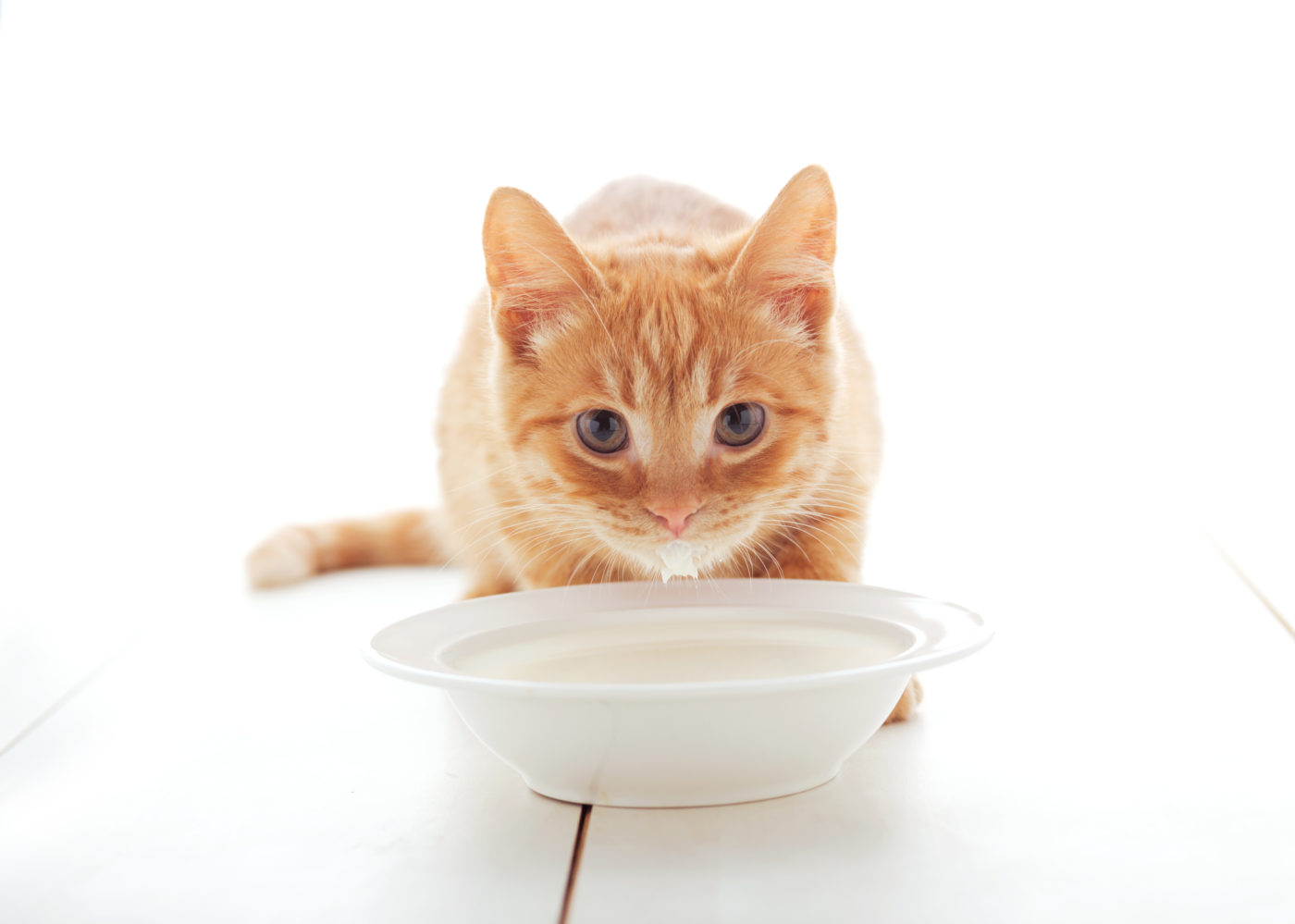Q The fall 2010 issue of Feline Wellness was an eye opener about cat food labels, how harmful grains are, and the importance of taurine. I immediately switched my cats to a premium food. However, I need a weight control formula for my cats and this particular brand only comes in one variety of weight control food. You also recommended varying the diet between chicken, duck, fish, etc. and not give cats only one type of food. So what do I do? Do I mix regular food with the one variety of weight control formula to give my cats variety and lessen the fat content at the same time? Please advise.
A If the diet is comprised of poor quality kibble, that may be the source of the weight problem. Most kibbled diets contain a large amount of carbohydrate in the form of cereal grains and their by-products. Cats in nature eat a “prey based diet”. That means fresh raw meat for protein, a moderate amount of fat and very little carbohydrate. The carbohydrate present in the prey animal is primarily found in the liver and predigested in the stomach and intestinal tract. A kibbled diet can be as high as 45% carbohydrate whereas a prey diet is generally less than 5%. The feline body is just not designed to metabolize that amount of carbohydrate into usable energy, so the liver stores it as body fat.
 Many weight loss formulas marketed for cats are low in fat but high in carbohydrates, which explains why many cats actually gain more weight on these diets. The easiest way to help cats reach and maintain a healthy weight is to feed them as nature intended: high protein, moderate fat and low carbohydrate meals. Good quality grain-free kibbles are now available from several manufacturers; that may be a good place to start your feline family on the road to healthy eating. Grain-free canned foods and raw diets are even closer to the prey diet and will almost always result in a healthier weight for adult cats.
Many weight loss formulas marketed for cats are low in fat but high in carbohydrates, which explains why many cats actually gain more weight on these diets. The easiest way to help cats reach and maintain a healthy weight is to feed them as nature intended: high protein, moderate fat and low carbohydrate meals. Good quality grain-free kibbles are now available from several manufacturers; that may be a good place to start your feline family on the road to healthy eating. Grain-free canned foods and raw diets are even closer to the prey diet and will almost always result in a healthier weight for adult cats.
The protein source, whether it be duck, chicken, fish or beef, really isn’t as important as the level of carbohydrates when discussing weight loss. But I do believe variety is important. Cats have a well deserved reputation for being finicky eaters, which can lead to several problems. Cats that restrict themselves to one type of food are at risk for developing hepatic lipidosis if that food source becomes unavailable for some reason. Hepatic lipidosis is a life-threatening inflammation of the liver that can occur when a cat stops eating. Lack of dietary variety can also lead to allergies, food intolerance and inflammatory bowel disease. Rotating foods helps ensure the diet is balanced and the kitty is getting all the nutrients he needs to be healthy.
Q My 13-year-old male cat sometimes gets a watery eye. It seems worse when he has just woken up or is at rest. After he has been walking around or playing for a bit, it clears. There is no redness or thick discharge and it usually clears up completely after a day. I wondered if it might be allergies, but it only affects one eye at a time. He has had this problem most of his life and otherwise is in good health.
A The fact that your cat has had this condition most of his life makes me think it’s caused by the reappearance of a dormant viral infection. The two most common viral causes of feline upper respiratory syndrome are herpes virus and calicivirus. They are highly contagious and quite common anywhere large numbers of cats are found: shelters, feral cat colonies, etc.
Most likely, your cat was infected as a kitten, at which time he probably showed more severe symptoms such as sneezing, discharge from the eyes and nose, red swollen conjunctiva and maybe even a fever. Most infected cats will recover fully in a few weeks. A fairly large percentage of cats will continue to harbor the virus in their nerve cells.
Often, stress will cause the virus to become active and some symptoms will return, such as mild inflammation of the conjunctiva with watery eyes. If the symptoms are mild and self-limiting, treatment is most likely unnecessary. If they persist or become more severe, you can try administering L-lysine (250mg to 500mg a day) until the symptoms resolve. As with all viral infections, the best treatment is generally good nutrition and nursing care.
I would recommend you ask your veterinarian to check for nasolacrimal duct stenosis. The nasolacrimal duct is the tear duct. It connects the eyes with the nasal cavity and allows excess tears to be drained away so they don’t run down the face. A narrowing of this duct can be a type of birth defect, or it can be acquired through scarring following cat fights or after a viral infection that causes severe inflammation. The fact that your cat’s condition appears to resolve on its own makes this a less likely diagnosis, but the test is quite simple and inexpensive. The veterinarian puts a mild stain into the cat’s eye and watches to see if colored tears are visible at the nasal opening. If the duct is blocked, it is often quite simple to flush it open using a saline solution.
Q My cat often scratches his ears, but when I look in them, I can see no sign of mites, irritation, redness or other problems. They look perfectly clean. The vet couldn’t see anything either. He doesn’t have fleas and never scratches himself anywhere else. What could cause itchy ears in a cat besides infections, allergies or mites?
A The most common cause of itchy ears without discernable inflammation is allergies. Often the inflammation isn’t seen on exam because it is located in the middle ear, an area not readily observed with an otoscope. Allergens can be found in the air, in the food, or in the environment.
Often we start with changing the diet, because that is the one allergen source that is easily controlled. If possible, I will start most cats with suspected allergies on a raw food diet. The reason I like raw food diets is that they most closely mimic what a cat would eat in nature. This one simple step can often eliminate or greatly reduce the symptoms associated with food intolerance or allergies. (Visit www.felinefuture.com to learn more about the proper feeding of felines.)
Grains such as wheat and corn are very common sources of allergic reaction. Choosing a grain-free canned diet may also be helpful. Antihistamines have a variable success rate when treating allergies in animals, but they are safe and may be worth trying. You should consult with your veterinarian before giving any medication to your cat.
Allergies to fleas can mimic food allergies, with the cat scratching his head and ears. Allergic cats don’t necessarily have a heavy flea burden; one or two can be enough to start the cycle. Therefore, treating for fleas may be a good idea. Steroids, either pills or injections, are often over-prescribed for animals with allergic symptoms and should be avoided until other solutions have been tried.

Veterinarian Dr. Marcia Martin is a holistic veterinarian practicing at The Holistic Medicine Center in Mobile, Alabama. Her new clinic offers state of the art diagnostics and 24-hour care as well as acupuncture, chiropractic and classical homeopathy. Dr. Martin is also the author of Quit Your Belly Aching, a homeopathic guide to colic treatment in horses. For more information on holistic healthcare for cats and other animals, read her blog at www.drmarcia.wordpress.com







No Comment